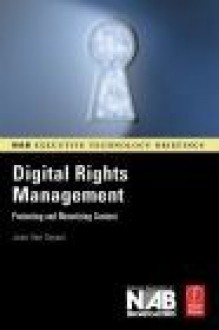Summary This book provides an overview of the current landscape in digital rights management (DRM), including: an overview of terminology and issues facing libraries, plus an overview of the technology (including standards and off-the-shelf products). It discusses the role and implications of DRM...
show more
Summary This book provides an overview of the current landscape in digital rights management (DRM), including: an overview of terminology and issues facing libraries, plus an overview of the technology (including standards and off-the-shelf products). It discusses the role and implications of DRM for existing library services, such as integrated library management systems, electronic reserves, commercial database licenses, digital asset management systems and digital library repositories. It also.. discusses the impact that DRM 'trusted system' technologies, already in use in complementary areas, such as course management systems and web-based digital media distribution, may have on libraries. Discusses strategies for implementing DRM in libraries and archives for safeguarding intellectual property in the web environment. Key Features A practical guide that places DRM within the context of the services and practices of the library and offers guidance on getting started. An understandable overview of the technologies and standards involved in digital rights management.An overview of the DRM landscape beyond libraries, with an emphasis on how this landscape impacts libraries and shapes DRM generally. In particular, the e-learning and digital media distribution arenas are embracing DRM, with significant potential impact for libraries. Includes an emphasis not just on digital books and still images, but digital video and audio, where the need for DRM is more compelling The Author The author is Associate University Librarian for Digital Library Systems, Rutgers, the State University of New Jersey. Grace Agnew is a noted author and lecturer on digital rights management, metadata and digital video. She is the architect of the Moving Image Collections (MIC) portal, a union catalog for the world's moving images, which is co-sponsored by the Library of Congress and the Association of Moving Image Archivists (AMIA). She was a principal investigator for the NSF Middleware Initiative invitational workshop, 'Digital Rights Management for Research and Education'; she served as an advisor to the American Library Association on the technical implications of the TEACH Act and is the co-author of two books published by the American Library Association.Readership This book is aimed at all information professionals. Contents Introduction Copyright Privacy and other gifts The resource in digital rights management The agent in digital rights management Digital rights metadata: describing rights and rights workflow The technology of digital rights management Putting the pieces together Bibliography Index
show less

